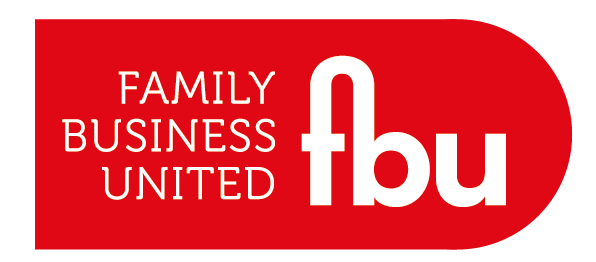Get in touch: nick.mayhew@alembicstrategy.com
When office productivity is threatened by an outbreak of toxicity
There are days where office politics or that nagging personal conflict between members of your team just gets too much. That stuff takes up way too much of your energy, and everyone else’s around you, and it’s getting in the way of progress. At times, you can almost feel office productivity creaking as a result.

The subject of office toxicity has become more prominent given that the average time staff will remain at a company is reducing, with most employees clocking up around 4.6 years, dropping to 3.2 for staff aged 24-32. This can be extremely problematic if it’s your high performing staff that are jumping ship due to less than perfect office conditions.
Toxic conversations - poison in the workplace
The effect of in-fighting breeds toxicity, and you know that toxicity is bad. It can leak poison beyond the root cause. What might begin as a seemingly minor disagreement amongst staff can spawn greater levels of ill-feeling and negativity on the office floor than you might have thought possible. Desk skirmishes can rapidly turn into larger, more aggressive tussles that have a wider impact across neighbouring staff, not only hampering the work of the two ‘fighters’, but those in the nearby proximity.
Toxic conversations are the negative discussions that occur around the office, often as teammates drift by desks, gather for a cuppa, or go out for lunch. These are the discussions that are basically just a moan-fest about something or someone that’s got an alternative view to that of others. And they can be so draining. They’re draining because they don’t do anything but cause bad feeling and resentment. In fact, they are the complete opposite of praise.
So why do office staff drag this stuff out in the workplace? Perhaps it’s an attempt to draw a focus on to personal issues with another colleague. Maybe they’re seeking answers to something that’s troubling them professionally and want to air it in an attempt to gain wider agreement on the subject. It could be any number of things that that draw out a judgment. But airing a grievance in public is probably because a person feels their issue is going to get some traction with a co-worker, and that they might gain some personal satisfaction or moral high ground by doing so. But why…?

The impact of staff conflict on culture
This may come as a surprise, but every company has a culture. Whether it’s good, bad, known or unknown, it’ll be there, lurking somewhere. Or maybe it’s described proudly above the front door for all to see when visitors arrive. Either way, it’s there alright. It’ll be woven into the fabric of your business in some form, being shaped by your people, and shaping your people, but not necessarily in equal measure. And not necessarily for the better of the business.
Have you ever considered the role culture plays in your organisation? I mean, really considered it? Think about:
- What does culture look like in your office?
- Where does it come from, how was it formed?
- Who looks after it - anyone?
- How big is it - large or small?
- Do your staff know about it, and do they care?
- How does it impact on productivity?
Culture plays a vital role in setting the tone of the office. It’s a little bit like the weather: some days it can enthuse and invigorate you, and on others it can mean a slow start, making you sluggish and unproductive. And this effect doesn’t stop at you - it reaches out and affects others around you too. Yep, that’s what culture does. Imagine two people in your office, Tim and Mike for example, publicly airing a toxic conversation with little care for being overheard by their colleagues. Nobody benefits from this type of chat. And once this sort of practice starts, it can be super infectious too.
Addressing personal conflict in your team
So you’ve established that toxic conversations are taking place and you know that the issue needs to be dealt with. Leaving it will only result in further bad feeling being generated amongst the perpetrators, and likely the wider team. But the long term effects of allowing such issues to continue in the hope that they might simply drift away over time is to ignore the root cause. Is the issue stemming from an isolated concern, or does it have a deeper, more significant origin? If the root cause is born out of a minor personal conflict or concern, it’s possible that it has become amplified by the office culture.
Ever looked out of the window and noticed how weather can put a spring in your neighbour's step when they leave the house on a sunny day? Well, it also encourages them to dip their heads on bad days and shuffle quietly into their cars before heading to work rather than say hello with a smile. Consider that concept as the culture working the same invisible, almost magic effect on people in your office when they come up against a challenge. How do they respond?Positively, or negatively?
Positive culture prevents a toxic office environment
Once you’ve identified toxic conversations or office conflict, the next task is to eradicate the root cause. The cause could stem from:
- New team members with clashing characters
- Operational issues
- Managerial conflict with an employee
- Personal issues invading work
- Poor communication between teams
- Misalignment of values
The cause of the toxicity could be any one of these or indeed something else.
5 steps to reduce conflict in the office
- Establish rapport
- Determine objectives
- Agree on a process
- Discuss flashpoints
- Initiate and monitor
Here's each step in more detail:
1. Establish rapport is central to restoring a non-toxic environment in your office. Without communication between the conflicting parties, the likelihood of eradicating the root cause of office toxicity is lowered. In fact, I'd suggest it's impossible - it simply won't go away on it's own! Building rapport with those involved with the objective of establishing trust is essential to reducing office conflict. People that are at the very least, speaking, stand a higher chance of agreeing a way forwards.
2. Determine objectives - work out what needs to be done to resolve the issue. Identification of the problem is the next task. There may be deep-rooted issues stemming from historical exchanges or instances that need to be surfaced before the repair work can commence. Understanding exactly what the issues are must be determined so that objectives can be set and the process agreed.
3. Agreement on the process to resolve the conflict must be established. This activity should map out the now, where and how of resolution. This is the same process we would use in strategy formulation for a business:
- Now: what the core of the issue looks like now and why things are not working
- Where: once resolved, what the ideal state of play might look like
- How: what it is that has to be done to get there, the actions people will take
4. Discuss flashpoints so that all involved are forearmed with the potential anxiety-causing waypoints on the route to issue settlement. Avoiding pitfalls that could derail the conflict resolution process is key, therefore, having an upfront warning system that alerts you to when these might occur is an insurance against failure.
5. Initiate and monitor the issue resolution process. It might seem like enough has been done by this stage to simply allow the conflicted parties to progress unaided, but in truth, it will be prudent to track the settlement. This might take the form of scheduled and regular meetings or interviews to check in with the state of play. This will further ensure against failure to resolve the toxic office environment.
It's unlikely that office toxicity will be permanently eradicated, but through observing these steps and working towards countering staff conflict when it arises, leaders, management and colleagues are better equipped to minimise the damage it can cause.
Get in touch: nick.mayhew@alembicstrategy.com




